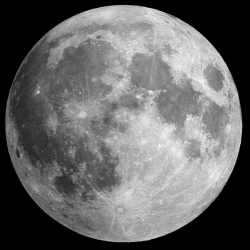
A return to the moon is gaining traction. Mars is still the ultimate destination. The space program did not get much attention in last year’s presidential race. But President Trump’s promise to "Make America Great Again" will likely include a refocus on, if not a return to, to the moon.
Expect also more partnering with private firms on space activities and missions and a reduction in NASA’s role monitoring Earth’s rising temperatures and sea levels.
Here are six questions (and answers) about the space program under the Trump administration:
Who in the Trump administration will be deciding the direction of the nation’s space program?
The name most mentioned early on to head NASA has been Oklahoma GOP Rep. Jim Bridenstine, a former naval aviator who sits on the Space Subcommittee of the Science, Space and Technology Committee and has been a champion for giving aerospace firms a greater role in the space program.
Mike Griffin, NASA administrator under George W. Bush, has reportedly interviewed for the job as well.
But Vice President Pence is expected to shape the administration’s larger vision of the space program. The former Indiana governor who grew up watching Americans land on the moon, is expected to chair the National Space Council. The administration is reviving the sometimes dormant panel that has advised presidents and coordinated space-related policies across agencies since it was first created more than 50 years ago.
Will Mars remain the top goal for human space flight?
Yes. Too many billions already have been spent preparing to send astronauts there. And in an era of increasing political rancor in Washington, a mission to the red planet remains a universally bipartisan, if ultimately expensive, goal.
But the specific parameters of a mission remain in flux.
Currently, NASA doesn’t have the long-term budget to meet its goal of sending astronauts by the 2030s (which would only be a fly-by, not a landing) although testing continues on the development of the Space Launch System that will propel the rocket and the Orion vehicle that will carry the crew.
There’s hope that private ventures and technological advances, particularly in the field of propulsion, could make the journey cheaper at a time when the Trump administration and Republicans on Capitol Hill will be focused on reining in spiraling government debt.
What about a return to the moon?
There seems to be widespread support, certainly among Republicans, for a return to the lunar surface that would include some sort of permanent presence. If cost allows.
Part of the reason is because the moon could be used as a logical place to test out systems for a Mars mission and as a stepping stone to the red planet. Part of it is also the commercial partnerships (such as mining) from a lunar strategy that could generate revenue and innovation. There’s also the national security concern of not ceding America’s advantage in deep space to another country (read: China).
“Missions to the moon offer many opportunities for commercial and international cooperation with a wide variety of traditional and non-traditional partners,” said Scott Pace, director of the Space Policy Institute at George Washington University. “An international return to the moon would have great potential to strengthen U.S. space leadership and industrial capabilities in the near term.”
The biggest obstacle is cost. The exorbitant price tag of a lunar lander ended up scuttling the Constellation Program in 2010. But backers of a moon mission believe aerospace firms can help blunt the expense through innovation and cost-sharing.
What does this mean for the mission to an asteroid the Obama administration had championed?
Bob Walker, the former Pennsylvania congressman who advised the Trump campaign on space issues, calls the mission “a dead duck.” He’s probably right.
It was a brainchild of Obama and his NASA Administrator, Charles F. Bolden Jr., to find a convenient, and much cheaper, alternative steppingstone destination for the SLS once the moon was ruled out. Plus, it was billed as a way to gather intelligence on asteroids that could be used to help deflect one if it was headed for Earth.
But the mission has had trouble generating excitement among some in the scientific community and many Republicans who think it’s draining resources from a potential moon landing mission. The current “proving ground” missions would take crews out around the moon, including a yearlong mission to test a habitat module, but no trip to the lunar surface.
Will Trump build on expansion of commercial activity in Low Earth Orbit?
Yes. This is one block Obama’s NASA promoted that Trump will certainly look to build on, a point Pence seemed to emphasize when he visited Florida’s Space Coast last fall during the campaign. And it may go beyond LEO to include the moon.
One question that Trump will probably have to decide is whether to extend the use of the International Space Station whose life was extended to 2024 by Obama. The orbiting lab is not only important to scientific experiments useful for deep space exploration, it’s also been a testing ground for the role of aerospace firms, such as SpaceX, to deliver cargo and (by 2018) crew.
What’s an area NASA is likely to do less of under Trump?
With Republicans in control of the White House and Congress, expect NASA to reduce, if not completely eliminate, its Earth science portfolio. It’s unlikely Trump would put a priority on tracking climate change considering he has called global warming a “hoax” perpetrated by the Chinese to gain a competitive advantage
